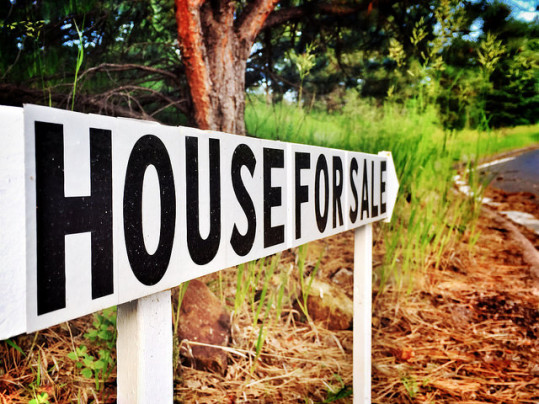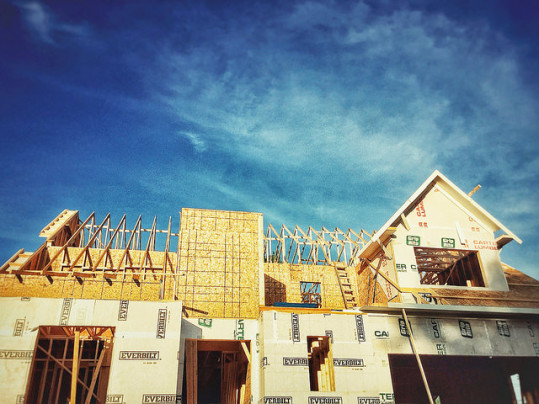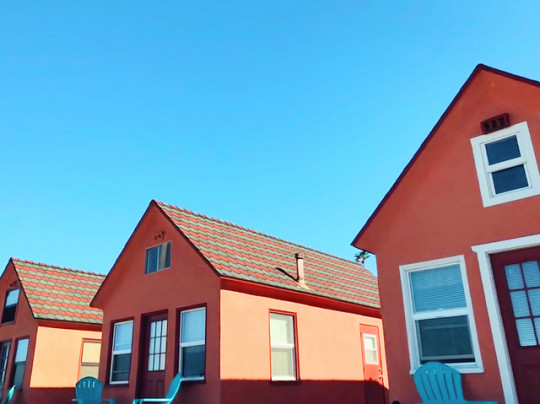The impact of the coronavirus has caused a lot of uncertainty for prospective home buyers and sellers. But while economic concerns and worry about the virus’ spread have dominated the news, there are some indications that the housing market may be able to weather the storm better than other segments of the economy. For one, its onset comes after many years of stable economic growth and a strengthening job market. That more than 10-year streak of improvement led to a real-estate market where demand for homes was so great that the supply of available houses for sale couldn’t keep up – leading to rising prices and more competition. In short, the strength of the market heading into 2020 provides a cushion to absorb some of the effects of ongoing mitigation efforts. Additionally, demographics offer hope for a brighter future once the virus subsides. Simply put, the large number of Americans now at or approaching the age of the typical first-time home buyer means demand for homes will inevitably return, as those 26-to-32 year olds get back on their feet and look to create households of their own. (source)
Archive for April 2020
Would You Buy A Home Without An In-Person Visit?
Naturally, the coronavirus has made buying and selling a home more complicated this spring. Social distancing and other mitigation efforts have changed the way we think about nearly everything, including the buying process. But according to a new survey from the National Association of Realtors’ consumer website, Americans are adapting, embracing technology, and not changing their plans. In fact, the survey found that 68 percent of respondents said their plans to move, or not, haven’t changed. Just 9 percent said they weren’t planning to move but now are and 14 percent said they’d canceled a plan to move. Furthermore, a growing number of buyers say they’d be comfortable buying a home they didn’t see in person, provided they had access to a virtual tour, photos, and detailed listing and neighborhood information. The largest share of participants said they’d still prefer to see a home with their buyer’s agent but 24 percent said they’d be willing to buy a home they didn’t see in person. And, when it comes to younger buyers, that number is closer to 30 percent. In short, the survey is good news for the housing market, as it indicates that Americans still want to buy and are open to new ways of getting it done. (source)
Confidence In New Home Market Falls In April
New home construction plays an important role in the overall economy. That’s why the National Association of Home Builders’ Housing Market Index is a closely watched barometer for the health of the housing market. The index asks home builders how confident they are in the market, how much buyer traffic they’re seeing, and what their expectations are for the next six months. According to the most recent results, confidence plunged in April to its lowest level since 2012. Robert Dietz, NAHB’s chief economist, says the impact of the coronavirus has disrupted building activity but he believes the effects will be temporary. “While the virus is severely disrupting residential construction and the overall economy, the need and demand for housing remains acute,” Dietz said. “As social distancing and other mitigation efforts show signs of easing this health crisis, we expect that housing will play its traditional role of helping lead the economy out of recession later in 2020.” Prior to the outbreak, new home sales were at their highest pace in years and residential construction was improving. The strength of the new home market before the virus hit offers hope that it can rebound quickly once mitigation efforts begin to ease. (source)
Mortgage Rates Hit All-Time Survey Low
The Mortgage Bankers Association has been tracking mortgage rates and application demand since 1990. Their Weekly Applications Survey covers 75 percent of all retail residential mortgage applications. Last week’s results show average mortgage rates at an all-time survey low. In fact, rates were down across all loan categories, including 30-year fixed-rate loans with both conforming and jumbo balances, loans backed by the Federal Housing Administration, and 15-year fixed-rate loans. Joel Kan, MBA’s associate vice president of economic and industry forecasting, said the decline is a sign that the market is stabilizing. “The decline in rates – despite Treasury yields rising – is a sign that the mortgage-backed securities market is stabilizing and lenders are successfully working through their lending pipelines,” Kan said. Also in the report, mortgage application demand rose 7.3 percent from the week before, primarily due to a 10 percent increase in the refinance index. Demand for loans to buy homes was down less than 2 percent, but is now 35 percent below where it was at the same time last year. (source)
Forecast Calls For Rebound Later This Year
Typically, economic forecasts rely on a mix of current and historical data. After all, if you understand where things are today and what’s happened in the past, you can make an educated guess about what the future might look like. This becomes harder, though, when there aren’t obvious historical precedents to use for comparison. Despite this, Freddie Mac’s most recent quarterly forecast attempts to predict how well the housing market will endure the economic impact of the coronavirus. So what do they see? Well, according to Sam Khater, Freddie Mac’s chief economist, we may begin to see a rebound during the second half of the year. “Undoubtedly, the housing market is facing its greatest challenge in over a decade as our nation weathers this unprecedented economic event,” Khater said. “Although the uncertainty of the crisis means forecasts of economic activity are more unclear than usual, we expect that most of the economic damage from the virus will be contained to the first half of the year. Going forward, we should see a recovery starting in the second half of 2020, though it will take some time for the economy to fully bounce back.” Specifically, Freddie Mac sees home sales and price increases slowing this year before rebounding in 2021. (source)
Credit Standards Tighten In March
The standards lenders use to evaluate whether or not a borrower is qualified for a mortgage aren’t fixed. Sometimes it’s easier to get a loan and other times you’re going to need a higher credit score and steadier income. The Mortgage Bankers Association measures where standards are with their monthly Mortgage Credit Availability Index. Any increase in the index indicates credit standards are loosening while declines mean they’re tightening. According to the most recent release, availability tightened in March. This, however, is to be expected, as the impact of the coronavirus has led to uncertainty in the economy. And naturally, during economic uncertainty, lenders will become more conservative and take on fewer risks. “Mortgage credit supply decreased 16 percent in March to the lowest level since June 2015, with declines in availability across all loan types,” Joel Kan, MBA’s associate vice president of economic and industry forecasting, said. “There was a reduction in the availability of loans with lower credit scores and higher LTV ratios, and the largest pullback came from the jumbo and non-QM space.” In short, prospective buyers should be prepared and have their finances in order, if they want to give themselves the best chance to qualify for a loan. (source)
What Type Of Home Do First-Time Buyers Want?
First-time home buyers are an important demographic for the housing market. Historically speaking, they represent about 40 percent of buyers in any given year. Naturally, that means their wants and needs are important to anyone selling a home, including builders. So what type of home are first-time buyers looking for? Well, according to a recent presentation at the 2020 International Builders’ Show, there are some features and amenities large majorities of first-time home shoppers say they’d like in a house. For starters, 77 percent say they’d prefer to buy a single-family detached home, with nearly 60 percent saying they’d like it to be in the suburbs. An open floor plan, stainless steel appliances, and a laundry room on the first floor were among the other features that made the list. But though you might expect the needs of first-time buyers to be different from older house hunters, that isn’t necessarily the case. In fact, there were some items on their wish list that are popular with all buyers. For example, younger buyers said they wanted more storage, energy-star windows, and hardwood floors, which are perennial must haves for buyers of all ages. (source)







